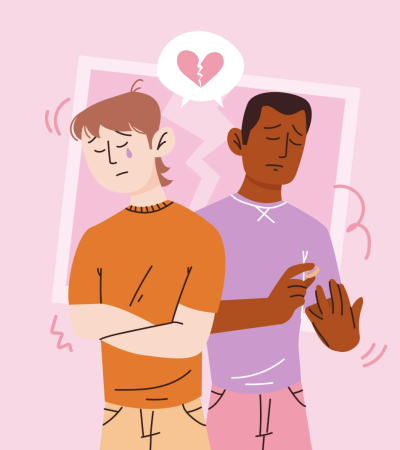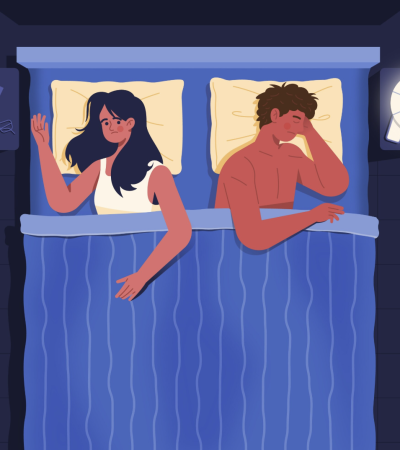By Kaitlin Myers & Grace Wang
This blog is a summary of our published article:
Belu, C.B., Corsini-Munt, S., Dubé, J. P., Wang, G. A., Rosen, N. O. (2023). Partner responses to low desire among couples coping with male Hypoactive Sexual Desire Disorder and associations with sexual wellbeing. Journal of Sexual Medicine, 20, 955-964. https://doi.org/10.1093/jsxmed/qdad069
Coping with HSDD
Men who experience low sexual desire that causes clinical distress for at least 6 months may meet the criteria for a diagnosis of Hypoactive Sexual Desire Disorder (HSDD), which is characterized by low desire and significant distress associated with their low desire [1]. Low desire can be imperative to their overall well-being as suggested by associations with lower sexual and relationship satisfaction, and higher rates of depression and stress [2,3,5]. Prior research has found that for women with sexual difficulties, their partners’ responses to their difficulties and how they perceive their partners’ responses are important for sexual well-being [4].
Three partner responses to sexual difficulties that research has found are facilitative responses (being affectionate to their partner), negative responses (being critical to their partner), and solicitous responses (being overly sympathetic to their partner).
But do partner and perceived responses to low sexual desire impact the sexual well-being of men experiencing HSDD?
What did we do?
So, what’s the best way to for partners to respond when their partner is experiencing HSDD? Partners that respond in a supportive and facilitative way, such as being empathic and affectionate rather than in a negative or avoidant manner, such as being hostile or avoidant, can positively impact the sexual well-being in their relationship, such as enhancing sexual satisfaction and mitigating sexual distress.
In other words, responding to sexual challenges such as HSDD in way that are facilitative can help promote a more satisfying sex life and lessen worries or concerns about sex. These findings would be valuable to couples coping with low desire, but can also help inform clinicians on what to target while helping couples build and maintain sexual well-being.
What did we find?
Considering prior research suggests that interpersonal responses to low desire can have an impact on the sexual well-being of couples [4], it’s not surprising that how partners respond (as perceived by both members of the couple) was linked to their sexual well-being.
More specifically, when men experiencing HSDD perceived their partners’ responses to their low desire as facilitative (for example, empathetic), the couple reported greater sexual satisfaction. If the man with HSDD perceived negative (for example, critical) responses to their low desire and their partner self-reported negative responses to their partner’s low desire, the couple reported lower sexual satisfaction. Lastly, in terms of sexual distress, if the man experiencing HSDD perceived their partner’s response to be avoidant, their partner reported more sexual distress. However, partner responses were not linked with sexual desire.
What does this mean?
So, what’s the best way to for partners to respond when their partner is experiencing HSDD? Partners that respond in a supportive and facilitative way, such as being empathic and affectionate rather than in a negative or avoidant manner, such as being hostile or avoidant, can positively impact the sexual well-being in their relationship, such as enhancing sexual satisfaction and mitigating sexual distress.
In other words, responding to sexual challenges such as HSDD in way that are facilitative can help promote a more satisfying sex life and lessen worries or concerns about sex. These findings would be valuable to couples coping with low desire, but can also help inform clinicians on what to target while helping couples build and maintain sexual well-being.
References
[1] American Psychiatric Association. (2013). Diagnostic and statistical manual of mental disorders (5th ed.). American Psychiatric Publishing.
[2] Busby, D. M., Leonhardt, N. D., Leavitt, C. E., & Hanna-Walker, V. (2020). Challenging the standard model of sexual response: evidence of a variable male sexual response cycle. Journal of Sex Research, 57(7), 848–859. https://doi.org/10.1080/00224499.2019.1705960
[3] Carvalheira, A., Traeen, B., & Štulhofer, A. (2014). Correlates of men’s sexual interest: a cross-cultural study. Journal of Sexual Medicine, 11(1), 154–164. https://doi.org/10.1111/jsm.12345
[4] Rosen, N. O., & Bergeron, S. (2019). Genito-pelvic pain through a dyadic lens: moving toward an interpersonal emotion regulation model of women’s sexual dysfunction. Journal of Sex Research, 56(4-5), 440–461. https://doi.org/10.1080/00224499.2018.1513987
[5] Štulhofer, A., Carvalheira, A. A., & Træen, B. (2013). Is responsive sexual desire for partnered sex problematic among men? Insights from a two-country study. Sexual and Relationship Therapy, 28(3), 246–258. https://doi.org/10.1080/14681994.2012.756137












